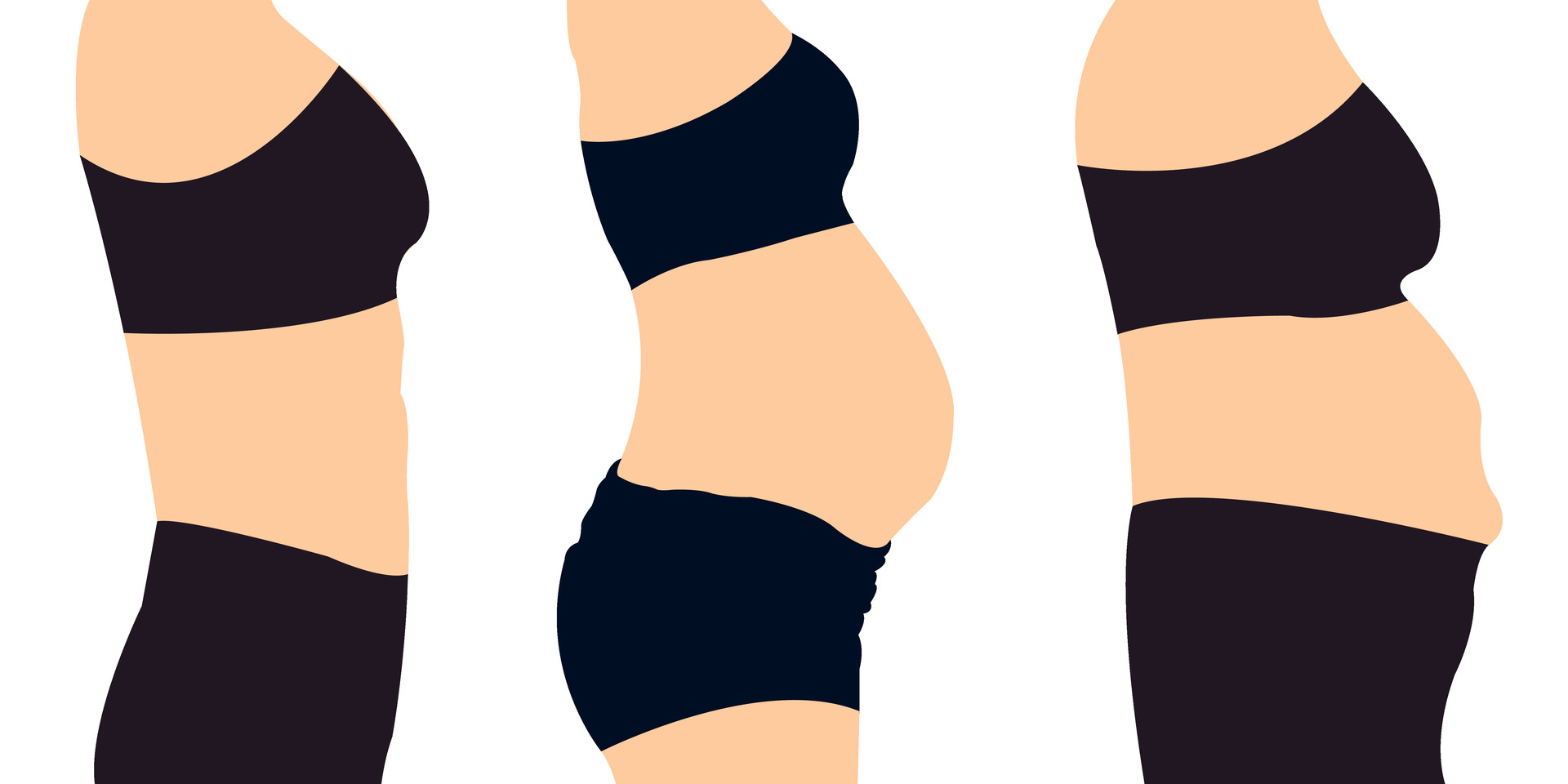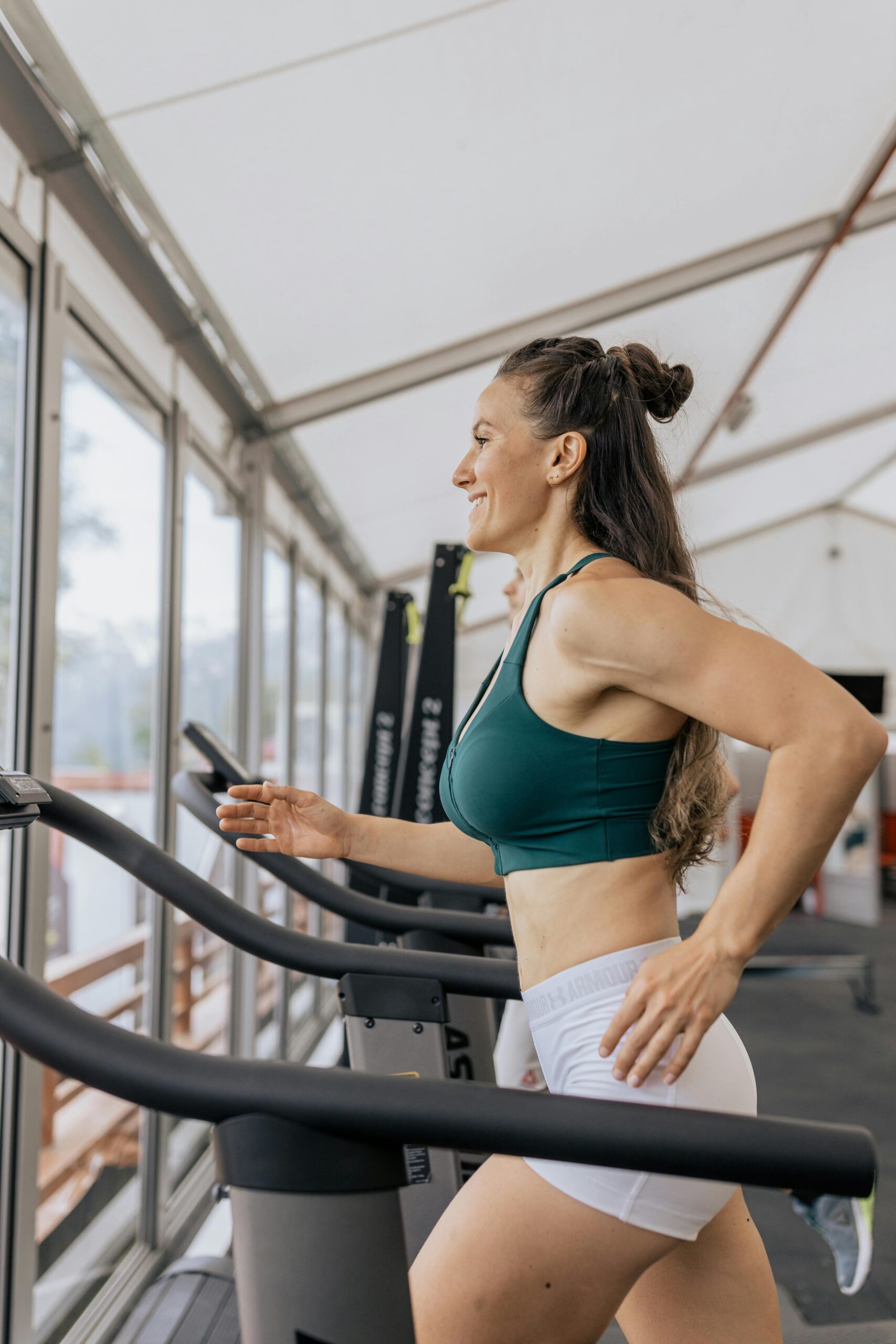As a fitness enthusiast who’s helped countless clients transform their bodies and lose belly fat, I’ve found the treadmill to be one of the most effective tools for targeting stubborn belly fat and developing stronger, more defined abs.
While spot reduction is a myth, a strategic treadmill routine combined with proper nutrition can effectively reshape your midsection. In this guide, I’ll share my proven approach to maximizing your treadmill workouts for optimal core results.
Losing belly fat and toning your abs is difficult, but you can with the appropriate treadmill routines. A treadmill can help you burn calories and strengthen your heart. Let’s look at how you can utilize a treadmill to reduce belly fat and tone your abs.
Understanding Belly Fat and abdominal tone

Source: vocal.media
Before diving into treadmill techniques, it’s important to understand what we’re targeting:
- Visceral fat sits deep within your abdomen, surrounding vital organs
- Subcutaneous fat lies just beneath the skin (the “pinchable” fat)
- Abdominal muscles include the rectus abdomen (six-pack), transverse abdomen, and obliques
The comprehensive approach in this article addresses fat loss through cardiovascular exercise and muscle development through engagement techniques.
Why Belly Fat Reduction Matters?
Reducing abdominal fat is more than just about looking good; it’s also about staying healthy. Extra belly fat, particularly visceral fat, has been linked to cardiovascular disease and diabetes. Regular treadmill workouts can help you shed abdominal fat while lowering your chance of major health concerns. Additionally, your abs will become more noticeable as you lose weight.
How To Set Up Your Treadmill Workspace
Proper treadmill setup is crucial for both safety and effectiveness.
Key Setup Points:
- Position the console at eye level
- Ensure sufficient clearance behind the machine
- Set emergency stop function
- Wear appropriate footwear with cushioning and stability
- Have a small towel and water bottle within reach
Why use a treadmill?
Strong Performance and Durability
Treadmills are ideal for cardio since they provide a consistent workout environment regardless of the weather. You can adjust the pace and incline to accommodate your fitness level. Treadmills also help you maintain consistency by allowing you to monitor your pace, distance, and improvement. Many treadmills offer programs to help you lose weight or increase endurance.
Progressive Treadmill Training Plan

Image created with deepai.org
Phase 1: Foundation Building (Weeks 1-2)
Workout Focus: Establishing base cardiovascular fitness and proper form
Session Breakdown:
- Warm-up: 5 minutes at 2.5-3.0 mph
- Main set: 20 minutes at 3.0-3.5 mph at 1-2% incline
- Cool-down: 5 minutes decreasing to 2.5 mph
- Frequency: 3-4 days per week
Technique Emphasis:
- Maintain an upright posture with shoulders relaxed
- Engage the core by drawing the navel toward the spine
- Focus on controlled breathing patterns
- Allow natural arm swing without tension
The Simplified Table Format Plan:
| Component | Details |
|---|---|
| Warm-up | 5 minutes at 2.5-3.0 mph (Speed) |
| Main Set | 20 minutes at 3.0-3.5 mph (Speed) at 1-2% incline |
| Cool-down | 5 minutes decreasing to 2.5 mph (Speed) |
| Frequency | 3-4 days per week |
| Technique Emphasis | – Maintain an upright posture with relaxed shoulders – Engage core by drawing the navel toward the spine – Focus on controlled breathing – Allow natural arm swing without tension |
Phase 2: Intensity Building (Weeks 3-4)
Workout Focus: Increasing caloric burn and metabolic rate
Session Breakdown:
- Warm-up: 5 minutes progressive pace increase
- Main set: 25 minutes alternating between:
- 3 minutes at 3.5-4.0 mph at 2% incline
- 2 minutes at 4.0-4.5 mph at 3% incline
- Cool-down: 5 minutes gradual decrease in speed and incline
- Frequency: 4-5 days per week
Technique Emphasis:
- Maintain core engagement throughout the workout
- Focus on powerful push-off through each step
- Drive knees forward with purpose
- Practice abdominal bracing during higher-intensity segments
Phase 2: Intensity Building (Weeks 3-4)
The Simplified Table Format Plan:
| Component | Details |
| Warm-up | 5 minutes progressive pace increase |
| Main Set | 25 minutes alternating between:- 3 minutes at 3.5-4.0 mph at 2% incline- 2 minutes at 4.0-4.5 mph at 3% incline |
| Cool-down | 5 minutes gradual decrease in speed and incline |
| Frequency | 4-5 days per week |
| Technique Emphasis | – Maintain core engagement – Powerful push-off through each step – Drive knees forward with purpose – Abdominal bracing during higher-intensity segments |
Phase 3: HIIT (High-Intensity Interval Training) Integration (Weeks 5-8)
Workout Focus: Maximizing fat-burning potential through interval training
Session Breakdown:
- Warm-up: 5 minutes dynamic pace building
- Main set: 30 minutes HIIT protocol:
- 30 seconds sprint (7.0–9.0 mph based on fitness level)
- 90-second recovery (3.0-3.5 mph)
- Repeat 10-12 times
- Cool-down: 5 minutes decreasing pace with gentle stretching
- Frequency: 3-4 days per week with rest days between
Technique Emphasis:
- Maintain powerful core engagement during sprints
- Focus on driving arms and knees during high-intensity intervals
- Keep chest lifted and shoulders away from ears
- Use controlled breathing to support core stability
The Simplified Table Format Plan:
| Component | Details |
| Warm-up | 5 minutes progressive pace increase |
| Main Set | 25 minutes alternating between:- 3 minutes at 3.5-4.0 mph at 2% incline- 2 minutes at 4.0-4.5 mph at 3% incline |
| Cool-down | 5 minutes gradual decrease in speed and incline |
| Frequency | 4-5 days per week |
| Technique Emphasis | – Maintain core engagement – Powerful push-off through each step – Drive knees forward with purpose – Abdominal bracing during higher-intensity segments |
Advanced Treadmill Techniques for Core Engagement

Image source: soletreadmills.com
To specifically target abdominal development while on the treadmill:
1. Incline Walking with Core Activation
Execution:
- Set the incline to 6-10%
- Walk at a moderate pace (3.0-3.5 mph)
- Consciously engage core muscles by drawing the navel to the spine
- Maintain a slight forward lean from ankles (not waist)
- Walk for 5-10 minute segments within your workout
2. Hand-Free Walking Intervals
Execution:
- Set the treadmill to a comfortable pace (2.8-3.2 mph)
- Release hands from rails or console
- Focus on balanced, controlled movement
- Slightly increase speed as balance improves
- Keep core engaged to maintain stability
- Perform for 3-5 minute intervals
3. Dynamic Arm Movement Patterns
Execution:
- While maintaining a moderate pace of walking
- Perform controlled arm movements:
- Overhead reaches
- Cross-body punches
- Lateral raises
- Focus on keeping the torso stable while the arms move
- Each movement engages core stabilizers
- Integrate 1-minute intervals between regular walking
Complementary Core Exercises for Enhanced Results
For optimal results, supplement your treadmill sessions with these targeted core exercises:
Post-Treadmill Core Circuit:
- Plank holds: 3 sets of 30-60 seconds
- Bicycle crunches: 3 sets of 15-20 per side
- Russian twists: 3 sets of 15-20 per side
- Mountain climbers: 3 sets of 30 seconds
Implementation Strategy:
- Perform after 2-3 treadmill sessions per week
- Focus on proper form rather than repetition count
- Increase duration and repetitions progressively
- Allow 48 hours of recovery between intensive core sessions
Nutrition Strategies to Support Belly Fat Loss
No treadmill routine will reveal abdominal definition without proper nutritional support.
- Caloric deficit: Aim for 300-500 calories below maintenance level
- Protein intake: Consume 0.8-1g per pound of body weight
- Hydration: Drink half your body weight (in pounds) in ounces of water daily
- Timing: Fuel properly before workouts and recover with protein after
- Anti-inflammatory focus: Emphasize colorful vegetables and omega-3-rich foods
Tracking Progress Beyond the Scale
Measure success through multiple metrics:
- Waist circumference (measured at navel)
- Progress photos from various angles
- Energy levels during workouts
- Workout performance improvements
- Sleep Quality
- Clothing fit
Common Mistakes to Avoid
When using the treadmill for abdominal results:
- Holding the handrails: Reduces caloric burn and core engagement
- Excessive speed without proper form: Increases injury risk
- Slouching posture: Disengages core muscles
- Focusing solely on steady-state cardio: Limits metabolic impact
- Inconsistent training: Reduces progressive adaptation

Source: pexels.com by anastasia shuraeva
Conclusion:
I’ve witnessed remarkable transformations using these treadmill strategies. Remember that consistency trumps intensity—showing up regularly with purposeful workouts will yield better results than sporadic all-out efforts.
Start where you are, progress gradually, and emphasize quality movement over quantity. Your abdominal definition will emerge as the combination of strategic cardiovascular training, core-focused movement patterns, and supportive nutrition creates the perfect environment for transformation.
What specific aspect of treadmill training for abdominal development would you like me to elaborate on further?
FAQs
Is a treadmill a good way to lose belly fat?
Yes, a treadmill can effectively help you lose belly fat when used consistently as part of a comprehensive fitness plan. Treadmill workouts create the caloric deficit necessary for overall fat loss, including abdominal fat. Regular treadmill sessions combining steady-state cardio and high-intensity intervals optimize fat-burning hormones and metabolic processes that target visceral (deep abdominal) fat. However, remember that nutrition is vital, as you cannot out-exercise poor dietary habits.
Does 12/3/30 actually work?
Yes, the 12/3/30 workout (12% incline, 3 mph, for 30 minutes) can be effective for many individuals. This protocol creates substantial caloric expenditure through the incline challenge while remaining low-impact. The workout activates posterior chain muscles, stabilizes your core, and elevates your heart rate into an optimal fat-burning zone. Research supports incline walking as an effective method for improving body composition and cardiovascular health. Perform it 3-5 times weekly alongside strength training and proper nutrition for best results.
Can you tone your stomach on a treadmill?
Yes, you can enhance abdominal definition using a treadmill, though with important qualifications. Treadmill workouts contribute to the fat loss necessary to reveal abdominal muscles, especially when incorporating incline work and intervals that engage core stabilizers. For maximum effectiveness, focus on proper posture (slight forward lean from ankles, not waist), conscious core engagement during your workout, and hands-free walking intervals to increase stabilization demands. Complement treadmill sessions with direct core strengthening exercises for complete abdominal development.
How to lose 10 pounds in 2 weeks on a treadmill?
Losing 10 pounds in 2 weeks solely through treadmill exercise is neither realistic nor healthy for most individuals. A safer, more sustainable approach involves:
Workout Protocol:
- 5-6 days of treadmill training per week
- Morning session: 30 minutes steady-state (65-75% max heart rate)
- Evening session (if possible): 20-minute HIIT workout (30 seconds high intensity/90 seconds recovery)
- Incorporate incline work to increase caloric burn
- Progress intensity gradually to prevent injury
Supporting Strategies:
- Create a moderate caloric deficit (500-750 calories below maintenance)
- Prioritize protein intake and complex carbohydrates
- Stay well-hydrated (minimum 3 liters daily)
- Ensure adequate sleep (7-8 hours nightly)
- Manage stress levels to reduce cortisol (which promotes abdominal fat storage)
Focus on sustainable habits that support long-term weight management rather than rapid weight loss that typically rebounds. A realistic goal is 1-2 pounds of fat loss per week through consistent exercise and nutrition practices.
Read: 30 Chicken Dinner Ideas Perfect For Weeknights, Dates, and More




